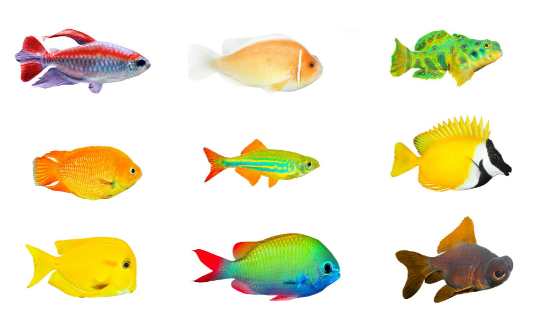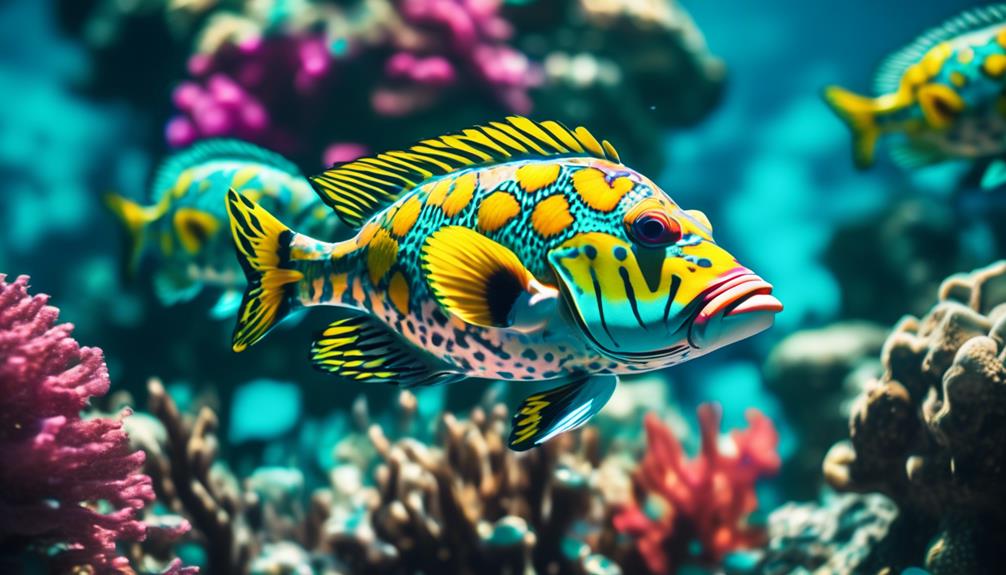
Are you skeptical that there could be any more secrets to uncover about the colorful and mysterious sweetlips? Well, prepare to be pleasantly surprised.
These captivating creatures, with their vibrant hues and enigmatic behavior, have captivated the imagination of marine enthusiasts for years. From their origins in the Indo-Pacific Ocean to their intricate patterns and luscious lips, sweetlips have a lot more to offer than meets the eye.
But that’s not all – there are hidden secrets waiting to be revealed. So, if you’re ready to explore the fascinating world of sweetlips and unlock their mysteries, then come along on this journey of discovery.
Key Takeaways
- Sweetlips are large saltwater fish with vibrant colors and unique patterns.
- They require a large aquarium with dim lighting and plenty of hiding spaces.
- Sweetlips are non-aggressive and can be kept with compatible tank mates.
- Breeding sweetlips in a home aquarium is challenging and not well-documented.
Size and Origins of Sweetlips
Sweetlips, those large and vibrant fish with their luscious lips, originate from the Indo-Pacific Ocean and can grow to lengths exceeding 3 feet. These saltwater fish belong to the grunt family and are known for their impressive size.
With their striking appearance and variety of vivid colorations, sweetlips are a popular choice for aquarium enthusiasts. They come in shades of brown, yellow, grey, black, and white, with complex patterns of stripes and spots covering their bodies.
To care for them properly, you’ll need a large aquarium, preferably 50 gallons or more, as they require plenty of swimming space. Sweetlips are non-aggressive and can be kept with other fish like angelfish, anthias, clownfish, boxfish, rabbitfish, and tangs. Remember to provide them with a dimly lit tank, filled with caves and crevices for them to hide in.
Vibrant Colorations of Sweetlips
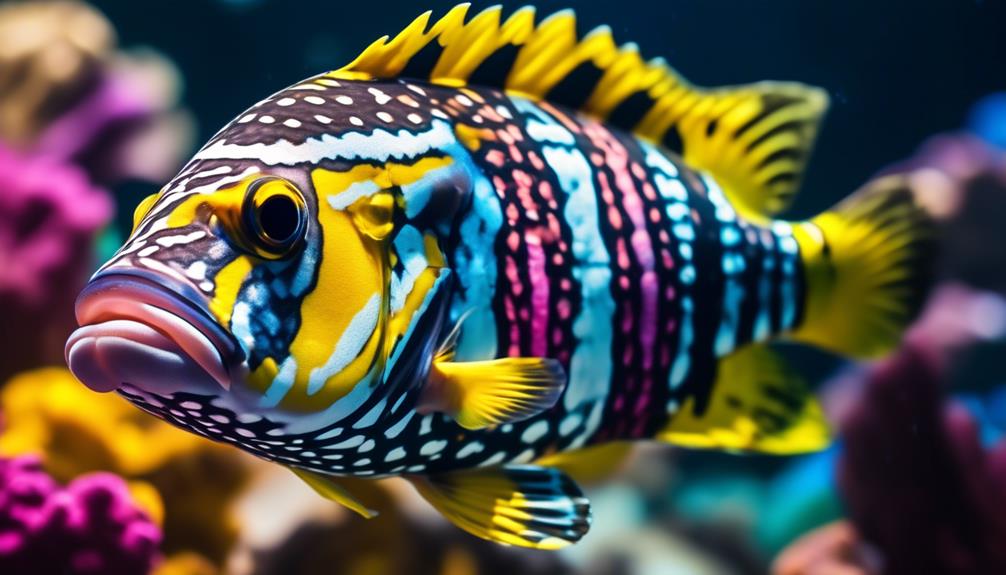
The vibrant colorations of sweetlips make them a visually stunning addition to any aquarium. Their beautiful hues and intricate patterns evoke a sense of awe and wonder. Here are three reasons why their vibrant colorations are so captivating:
- Dazzling Diversity: Sweetlips come in a wide range of vivid colors, including shades of brown, yellow, grey, black, and white. Their bodies are adorned with complex patterns of stripes and spots, creating a mesmerizing display of color.
- Nature’s Masterpieces: Each sweetlip is a living work of art, with its unique combination of colors and patterns. Their vibrant colorations reflect the beauty and diversity of the underwater world, reminding us of the wonders that lie beneath the surface.
- Eye-catching Elegance: The vibrant colorations of sweetlips add a burst of color and life to any aquarium. Their presence can transform a dull tank into a vibrant and captivating underwater landscape, bringing joy and tranquility to anyone who gazes upon them.
Care and Maintenance for Sweetlips in Aquariums
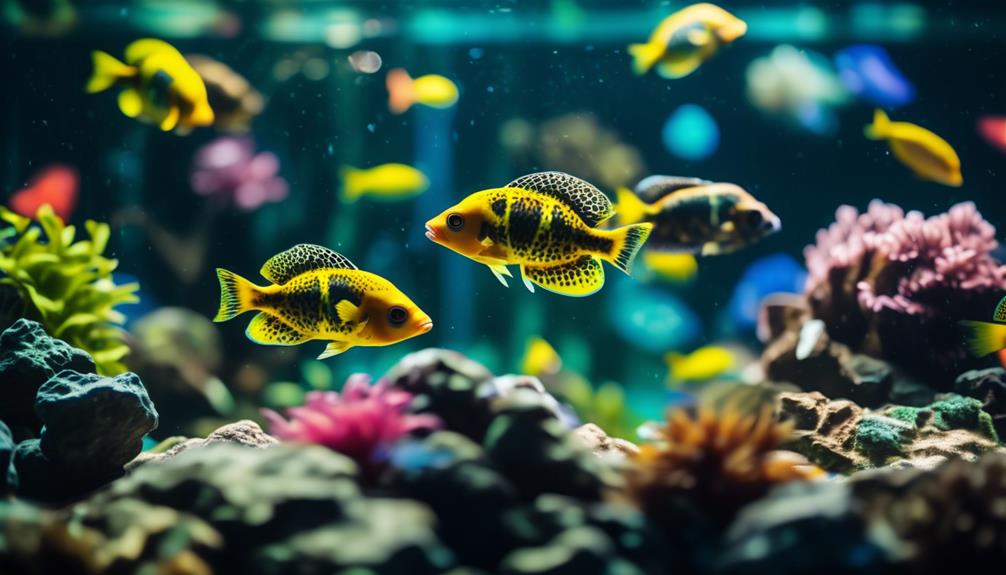
To ensure the well-being of your sweetlips in an aquarium, proper care and maintenance are essential. Sweetlips require a large aquarium, preferably 50 gallons or more, due to their great size. They prefer swimming in the middle region of the tank and can be kept with tank mates like angelfish, anthias, clownfish, boxfish, rabbitfish, and tangs.
Weekly care and attention are necessary for their well-being. Sweetlips prefer dimly lit aquariums with plenty of caves and crevices to hide in. They’ve fast growth rates and feed during the night, thriving on a meaty diet of shrimp, clams, and worms.
Breeding sweetlips in the home aquarium isn’t well-documented. It’s recommended to keep them in groups of 4 or more and only by experienced aquarists.
Feeding Habits and Growth of Sweetlips
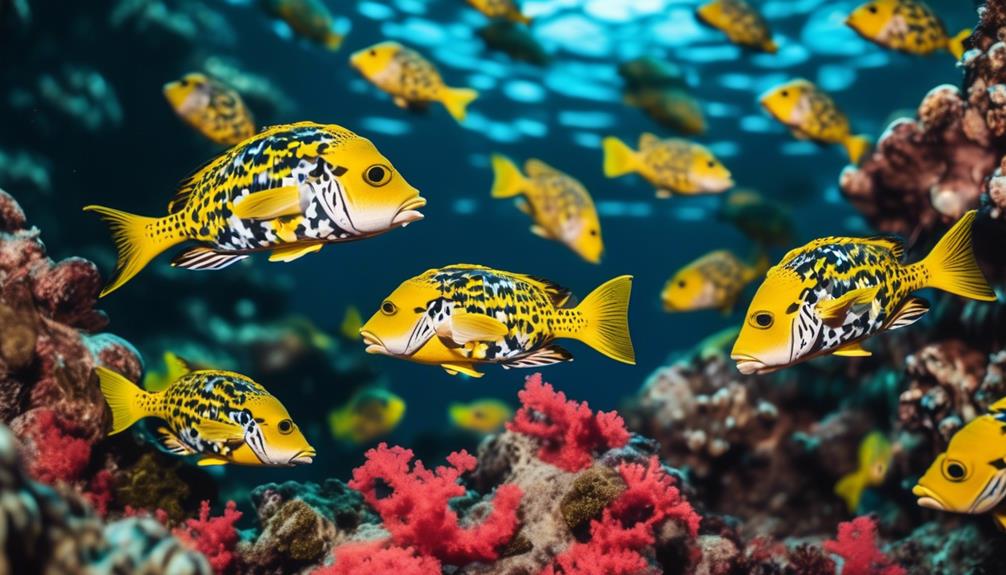
Feeding habits and growth of sweetlips are influenced by their nocturnal nature and preference for a meaty diet. These fascinating fish have some intriguing characteristics when it comes to their feeding habits and growth:
- Nocturnal hunters: Sweetlips are most active at night, prowling the ocean depths for their next meal. This secretive behavior adds an air of mystery to their feeding habits.
- Meaty cravings: Unlike some fish that rely on plants or algae, sweetlips have a carnivorous appetite. They thrive on a diet rich in shrimp, clams, and worms, satisfying their need for protein.
- Rapid growth: Sweetlips have impressive growth rates, allowing them to reach lengths of over 3 feet. Their meaty diet contributes to this rapid development, ensuring they grow into magnificent specimens.
These unique feeding habits and growth patterns make sweetlips a captivating species to observe in their natural habitat or in a well-maintained aquarium.
Mysterious Breeding Behavior of Sweetlips
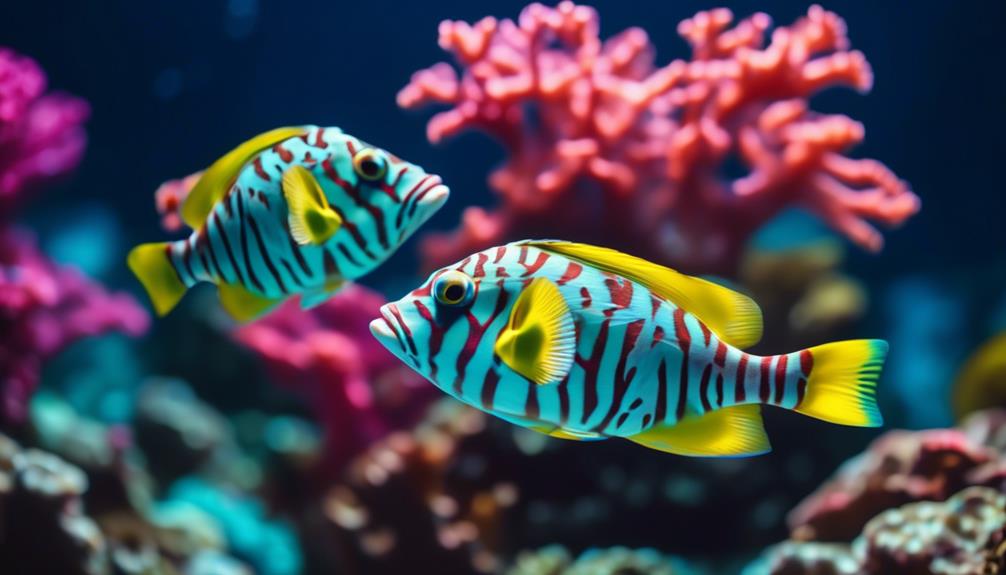
After exploring the intriguing feeding habits and rapid growth of sweetlips, it’s time to uncover the enigmatic breeding behavior of these captivating fish.
Little is known about breeding sweetlips in the home aquarium. In the wild, sweetlips are pelagic spawners, releasing thousands of eggs into the water during spawning. However, replicating this behavior in captivity has proven challenging. The exact triggers for breeding are unclear, and the conditions required for successful reproduction haven’t been fully understood.
Despite the mystery surrounding their breeding behavior, it’s believed that maintaining a stable and well-maintained aquarium environment, providing appropriate nutrition, and ensuring the presence of a compatible mate may increase the chances of successful breeding.
Further research and experimentation are needed to unravel the secrets of sweetlips breeding behavior.
Different Varieties of Sweetlips
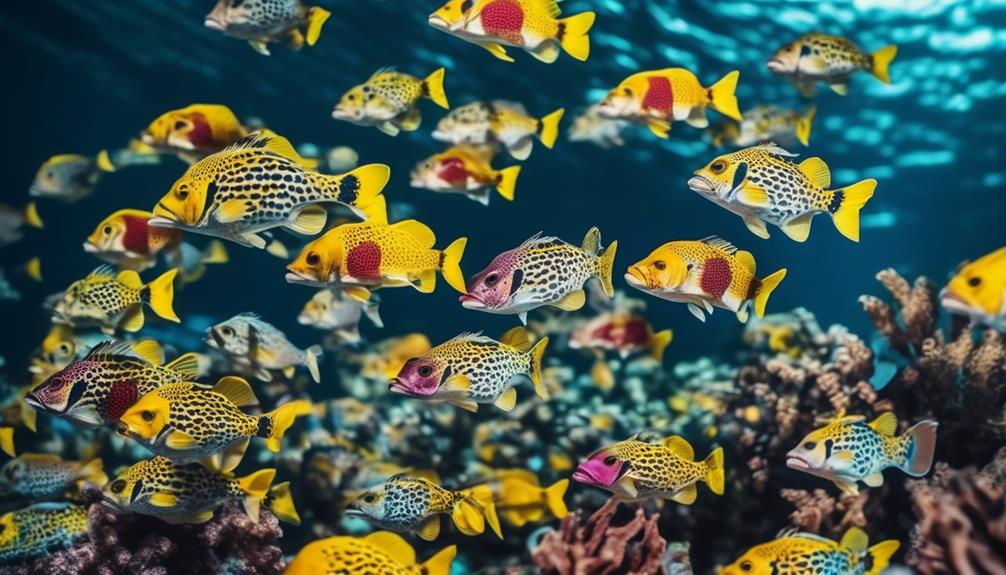
There are several distinct varieties of sweetlips, each with their own unique characteristics and appearances.
- The spotted sweetlips have a stunning pattern of spots covering their bodies, resembling a work of art. Their vibrant colors make them stand out in any aquarium, captivating the eyes of onlookers.
- The striped sweetlips, as the name suggests, boast intricate stripes that run along their bodies, creating a visually striking appearance. These stripes create a sense of elegance and sophistication, drawing admiration from all who see them.
- The dogfish orientalis sweetlips are known for their distinctive elongated bodies and sleek appearance. Their streamlined shape gives them a graceful and agile presence, instilling a sense of wonder and fascination.
These different varieties of sweetlips not only add beauty to aquariums but also spark curiosity and wonder in those who observe them. Their unique characteristics and appearances make them truly captivating creatures to behold.
Behavior and Social Needs of Sweetlips
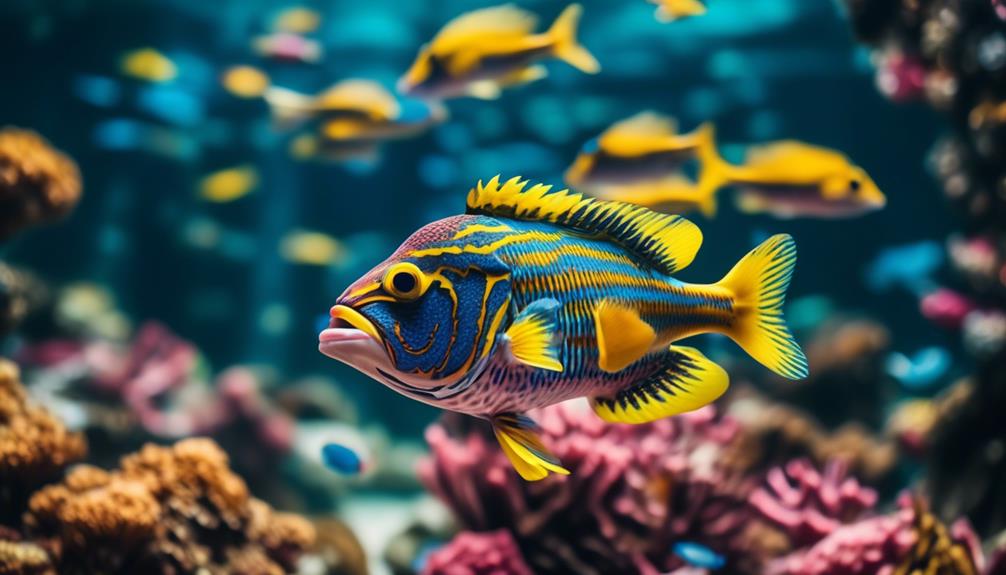
As you observe the stunning varieties of sweetlips in your aquarium, it is important to understand their behavior and social needs for their optimal care and well-being. Sweetlips are social fish that thrive when kept in groups of four or more. They are peaceful and can be housed with compatible tank mates like angelfish, anthias, clownfish, boxfish, rabbitfish, and tangs. They prefer swimming in the middle region of the tank and need plenty of caves and crevices to hide in. To provide further insight, the table below highlights some key behaviors and social needs of sweetlips:
| Behavior | Social Needs |
|---|---|
| Active swimmers | Group living |
| Nocturnal feeders | Compatible tank mates |
| Curious and exploratory | Plenty of hiding places |
| Non-aggressive | Middle region of the tank |
| Require dimly lit aquariums | Regular care and attention |
Sweetlips’ Impact on Reef Aquariums
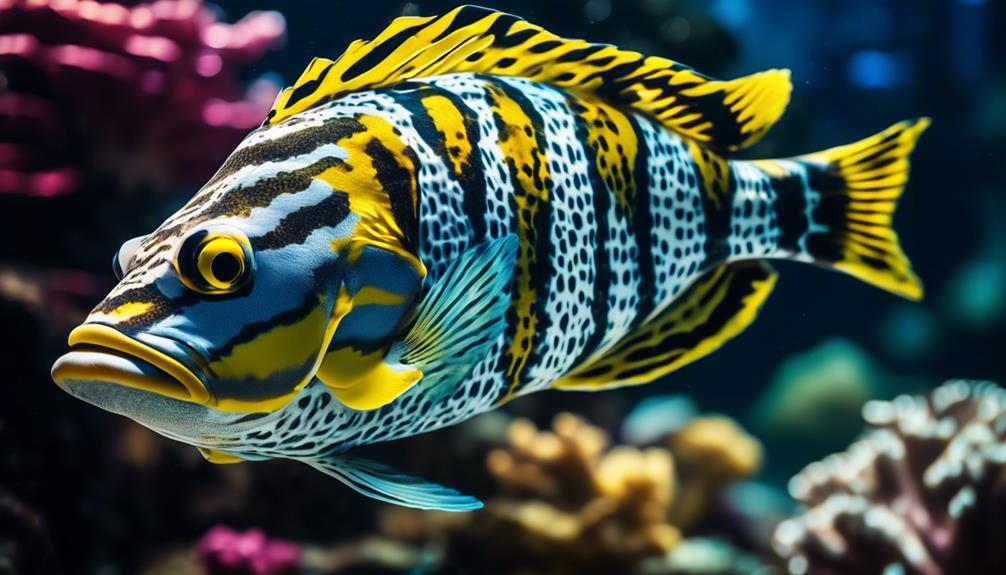
Sweetlips have a significant impact on the delicate ecosystem of reef aquariums. Here are three reasons why their presence is crucial:
- Natural Pest Control: Sweetlips have a voracious appetite for crustaceans and worms, which can overrun reef aquariums if left unchecked. By feeding on these pests, sweetlips help maintain a healthy balance in the tank, preventing the spread of diseases and the degradation of coral reefs.
- Biodiversity and Beauty: The vibrant colors and patterns of sweetlips add visual appeal to reef aquariums, creating a stunning underwater landscape. Their presence enhances the overall biodiversity of the tank, contributing to a more vibrant and thriving ecosystem.
- Educational Value: Keeping sweetlips in reef aquariums provides a unique and educational experience for aquarists. By observing their behavior and interactions, enthusiasts can learn more about the delicate balance of marine ecosystems and gain a deeper appreciation for the wonders of the underwater world.
Challenges of Keeping Sweetlips in Aquariums

When keeping sweetlips in aquariums, you may encounter several challenges that require careful attention and expertise.
One of the main challenges is the size of the aquarium. Sweetlips are large fish and require a tank of at least 50 gallons, preferably more, to accommodate their size. Additionally, sweetlips prefer swimming in the middle region of the tank, so providing enough space for them to move around is essential.
Another challenge is their feeding habits. Sweetlips are nocturnal and feed during the night, so it can be a challenge to ensure they’re getting the proper diet. They thrive on a meaty diet of shrimp, clams, and worms, which may require extra effort to provide.
Lastly, sweetlips are known to be difficult to care for and should be kept by experienced aquarists who have the necessary knowledge and expertise to meet their specific needs.
Intriguing Secrets of Sweetlips Revealed
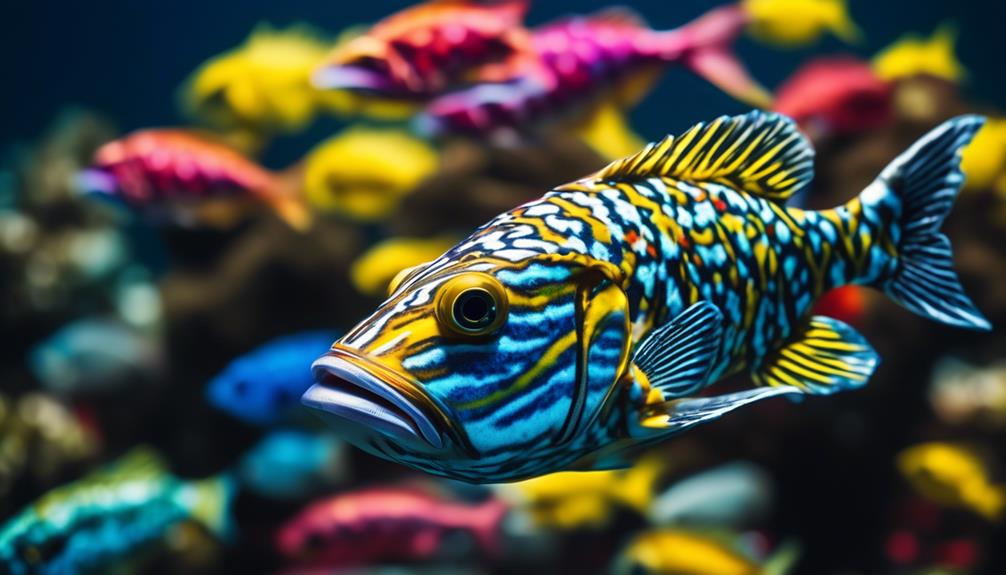
Discover the fascinating hidden secrets of these captivating fish, the sweetlips. These intriguing creatures hold many mysteries that will leave you in awe.
- Communication: Sweetlips have a unique way of communicating with each other. Through a series of clicks and pops, they’re able to convey messages and establish social bonds. It’s like having their own secret language!
- Camouflage: Sweetlips are masters of disguise. They possess the ability to change their coloration and patterns to blend in with their surroundings. This helps them hide from predators and sneak up on unsuspecting prey. It’s like they’ve a secret superpower!
- Lifespan: Sweetlips have surprisingly long lifespans. Some species can live up to 30 years in the wild! This means they’ve plenty of time to explore the ocean depths and unlock even more secrets. It’s like they hold the key to the underwater world!
These hidden secrets of sweetlips make them even more enchanting and mysterious. Each discovery brings us closer to understanding these incredible creatures and the wonders of the ocean.
Frequently Asked Questions
What Is the Average Lifespan of a Sweetlip Fish in an Aquarium?
The average lifespan of a sweetlip fish in an aquarium is typically around 10 to 15 years. However, it can vary depending on factors like diet, water quality, and overall care.
Can Sweetlips Change Their Coloration as They Grow Older?
Yes, sweetlips can change their coloration as they grow older. They come in a variety of vivid colorations and their bodies are covered in complex patterns of stripes and spots.
Are There Any Specific Water Parameters That Sweetlips Require in Their Aquarium?
No, sweetlips don’t require specific water parameters in their aquarium. They can adapt to a variety of conditions. However, it’s important to maintain good water quality and provide proper care for their overall health and well-being.
How Often Should Sweetlips Be Fed in Order to Maintain Their Optimal Health?
You should feed sweetlips regularly to keep them healthy. They have fast growth rates and are nocturnal feeders. Offer them a meaty diet of shrimp, clams, and worms to maintain their optimal health.
Is It Possible to Successfully Breed Sweetlips in a Home Aquarium?
Yes, it is possible to successfully breed sweetlips in your home aquarium. Ensure proper care, provide a meaty diet, and create suitable breeding conditions. Experienced aquarists can enjoy the rewarding experience of breeding these beautiful fish.
What Makes Anglerfish and Sweetlips Both Colorful and Mysterious?
The rare and enigmatic anglerfish insights reveal that both the anglerfish and sweetlips have vibrant and eye-catching colors that help them blend in with their surroundings. Their mysterious behaviors and unique adaptations make them captivating subjects for marine biologists and enthusiasts alike.
Conclusion
So, if you’re ready to embark on an exciting journey into the vibrant and mysterious world of sweetlips, be prepared for a rewarding challenge.
These captivating marine creatures, with their stunning appearance and mesmerizing behavior, will surely leave you in awe.
From their colorful and intricate patterns to their fast growth rates and intriguing breeding behavior, sweetlips have many secrets waiting to be uncovered.
So dive in, care for them with dedication, and get ready to witness the enchantment of these beautiful fish.




